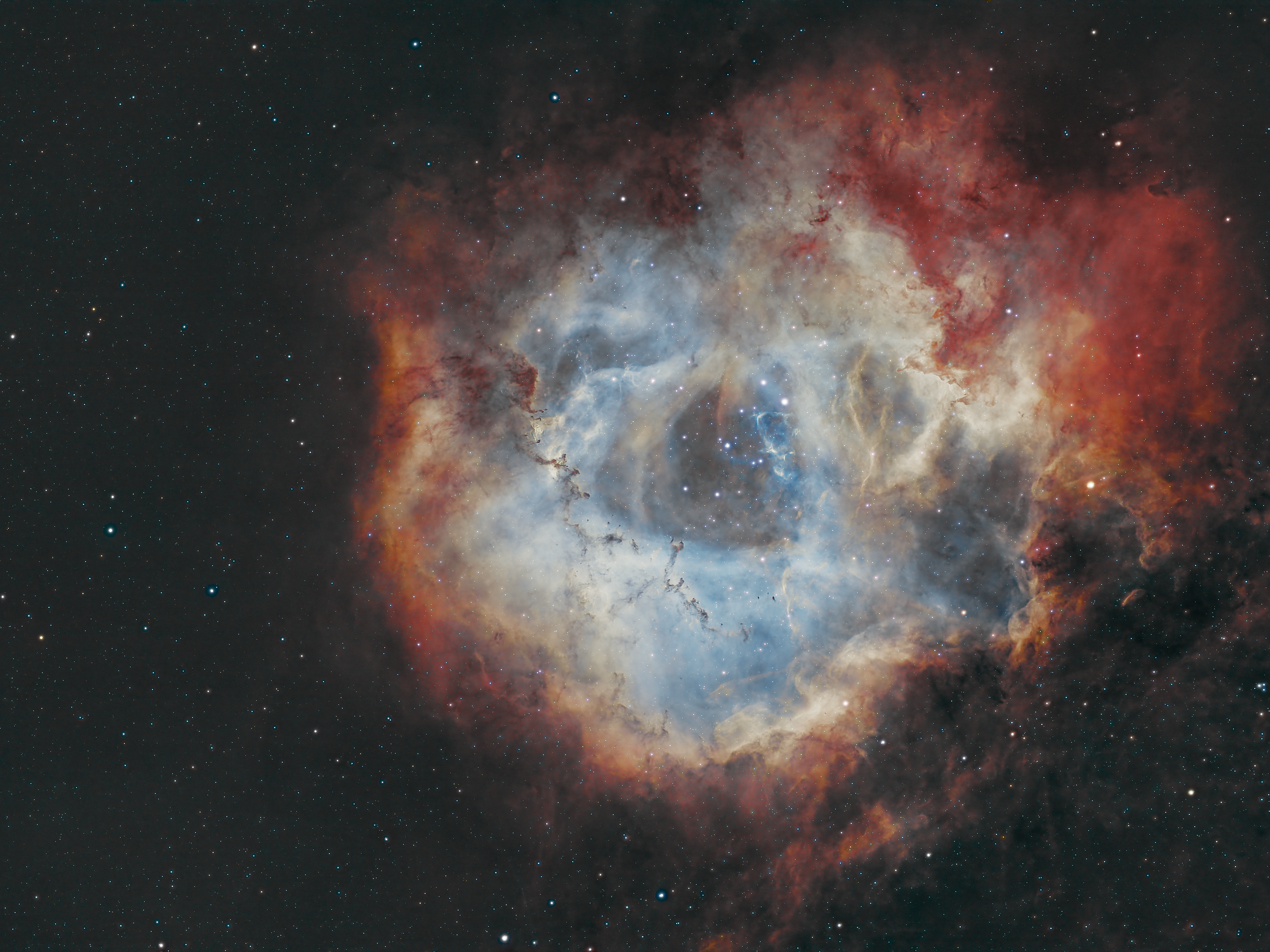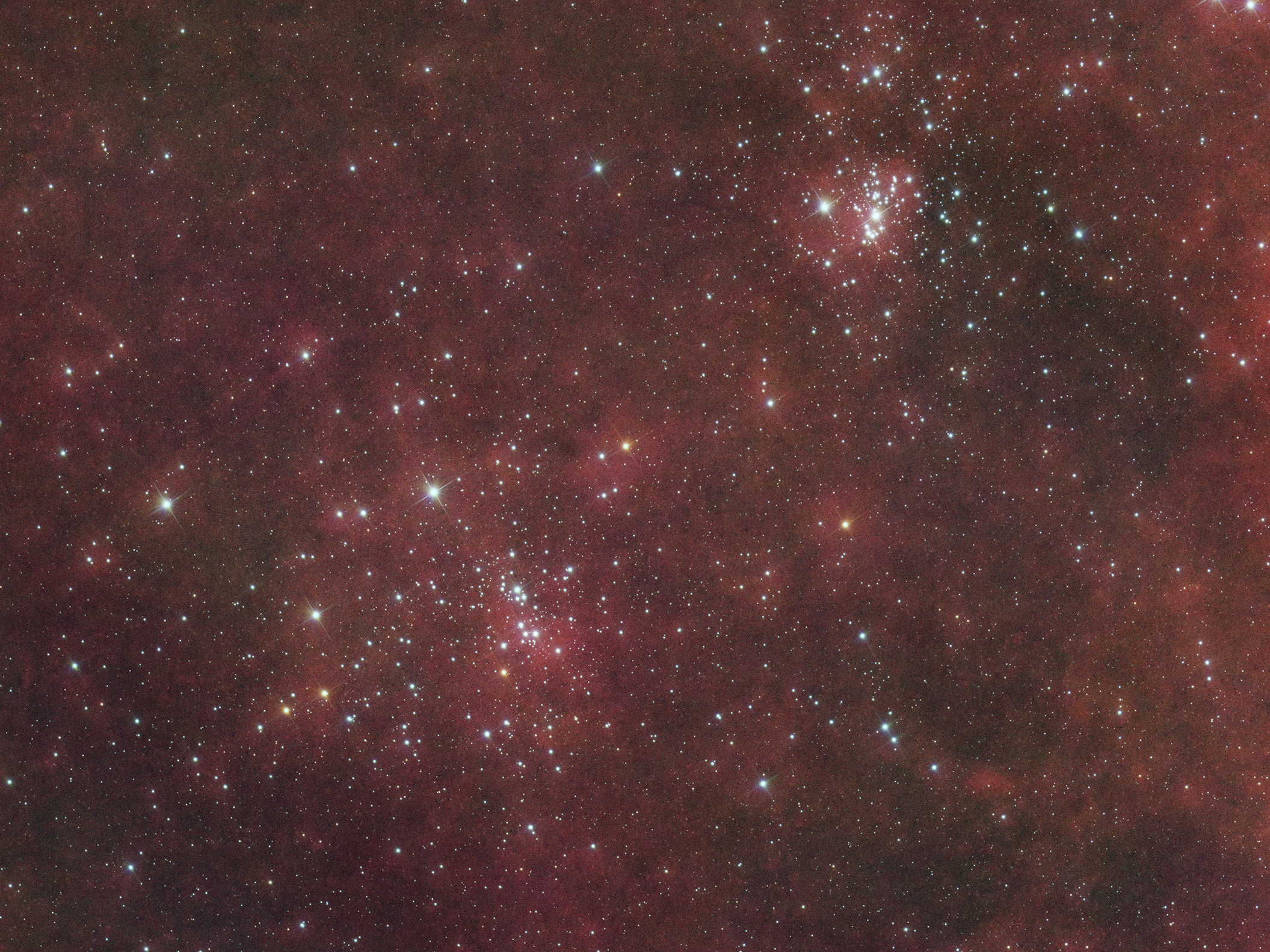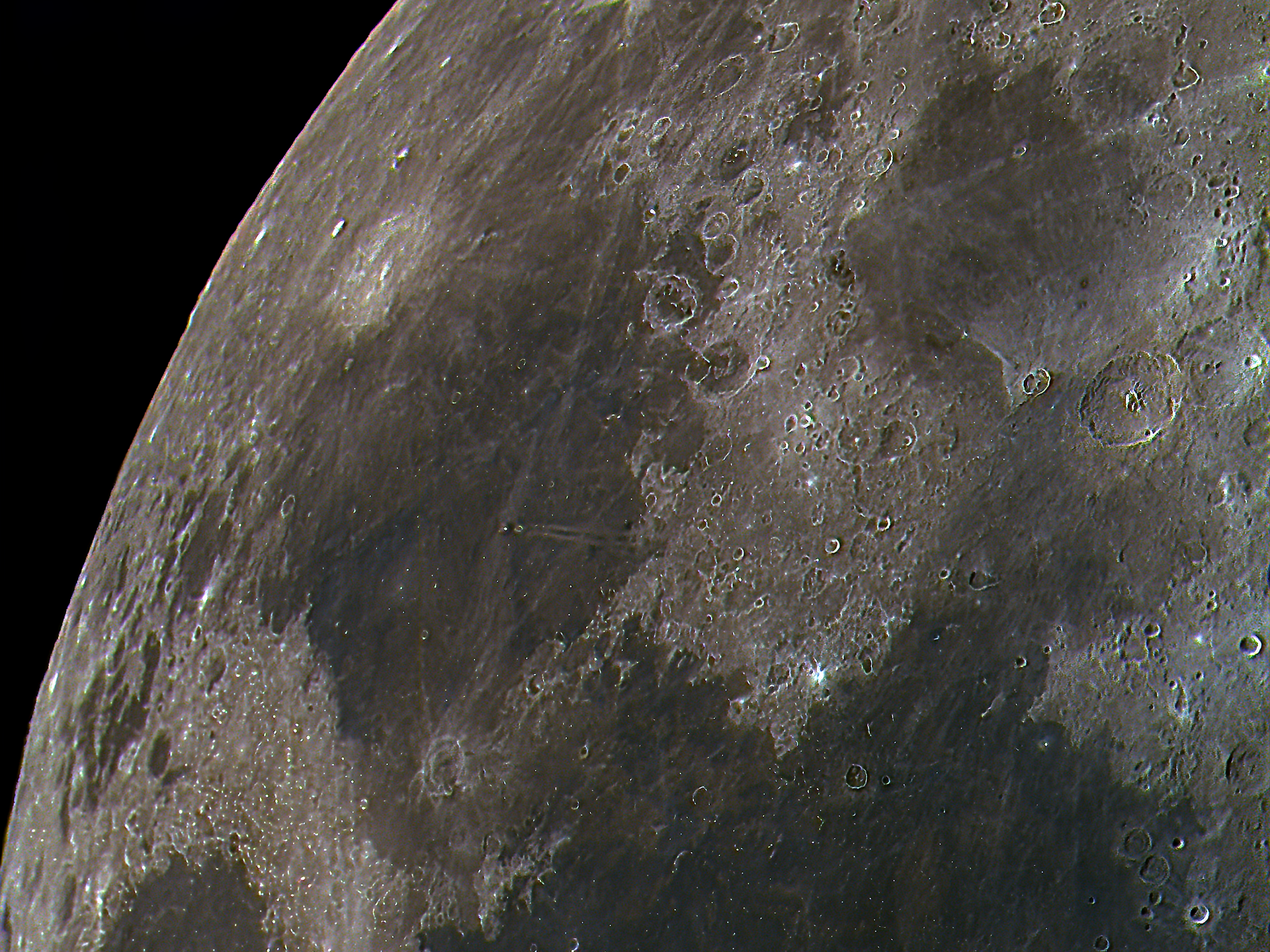
The Andromeda Galaxy, also known as M31, is the nearest spiral galaxy to our own Milky Way, located approximately 2.5 million light-years away in the constellation Andromeda. It is the largest galaxy in the Local Group, spanning about 220,000 light-years and containing trillions of stars. The Andromeda Galaxy shares a similar spiral structure with the Milky Way, featuring a bright central bulge, sweeping spiral arms, and a surrounding halo of older stars and globular clusters. It is on a collision course with our galaxy, with the two expected to merge in about 4.5 billion years, forming a new elliptical galaxy often dubbed “Milkomeda”. Andromeda is one of the few galaxies visible to the naked eye, appearing as a faint, elongated smudge in dark skies.

The Triangulum Galaxy, also known as M33, is a spiral galaxy located about 3 million light-years away in the constellation Triangulum. It is the third-largest member of the Local Group, alongside the Milky Way and the Andromeda Galaxy (M31). Spanning approximately 60,000 light-years, the Triangulum Galaxy boasts a beautiful face-on spiral structure with bright blue star clusters, pink hydrogen-alpha regions, and dark dust lanes. It is home to NGC 604, one of the largest star-forming regions known. The galaxy’s rich star-forming activity and proximity make it a fascinating target for amateur and professional astronomers alike.

The Whirlpool Galaxy, also known as M51 or NGC 5194, is a stunning spiral galaxy located approximately 31 million light-years away in the constellation Canes Venatici. It is renowned for its grand-design spiral structure, showcasing well-defined spiral arms filled with young stars, pink star-forming regions, and dark dust lanes. The Whirlpool Galaxy is interacting with its smaller companion, NGC 5195, creating gravitational forces that enhance its spiral arms and trigger intense star formation. This galactic dance provides valuable insights into galactic interactions and evolution, making M51 a favorite target for both amateur and professional astronomers.

The Bode’s Galaxy (M81) and the Cigar Galaxy (M82) create a captivating cosmic duo in the constellation Ursa Major, approximately 12 million light-years away. M81 is a grand-design spiral galaxy, showcasing elegant spiral arms and a bright central bulge, while M82 is an irregular starburst galaxy, characterized by its elongated shape and intense star-forming activity. The gravitational interaction between these galaxies has triggered starbursts in M82, resulting in dramatic red hydrogen filaments and energetic outflows. A picture featuring M81 and M82 beautifully highlights the contrast between the calm, structured spiral of Bode’s Galaxy and the dynamic, turbulent nature of the Cigar Galaxy, offering a glimpse into the effects of galactic encounters.

The Pinwheel Galaxy (M101) is a magnificent grand-design spiral galaxy located approximately 21 million light-years away in the constellation Ursa Major. Spanning about 170,000 light-years, M101 is nearly twice the size of our Milky Way, showcasing prominent spiral arms filled with young, blue stars, pink hydrogen-alpha regions, and intricate dust lanes. The galaxy’s asymmetry is the result of gravitational interactions with neighboring galaxies, which have enhanced its spiral structure and triggered vigorous star formation. An image of the Pinwheel Galaxy reveals a vibrant and detailed view of its spiral beauty, offering insights into the complex dynamics of spiral galaxies and the impact of galactic encounters.







